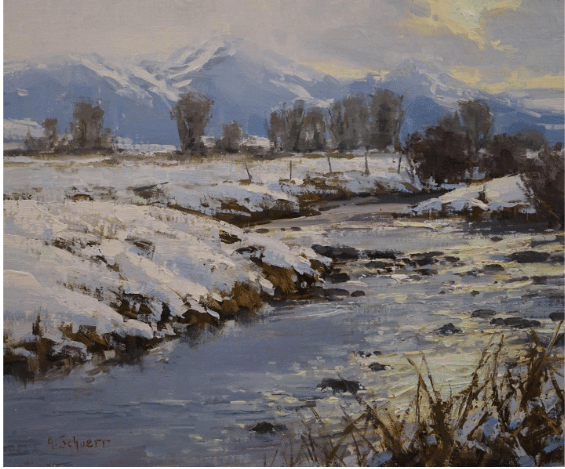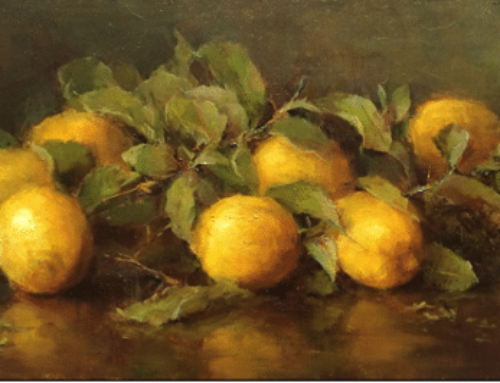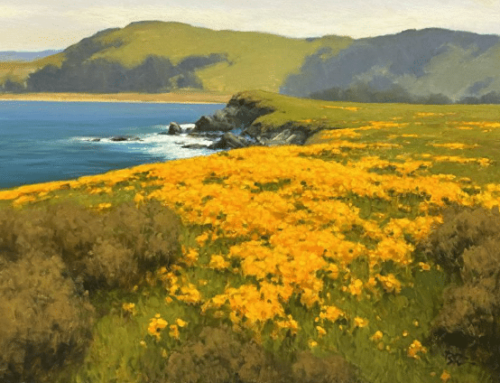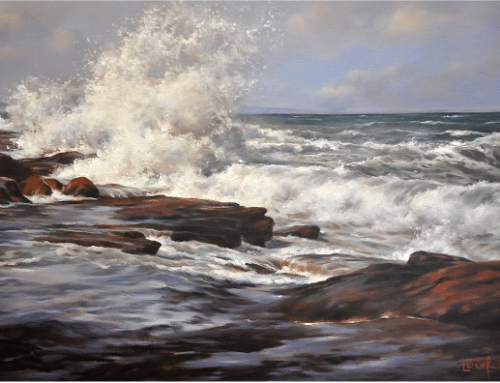Winter’s arrival can bring a contemplative, philosophical turn to an artist’s mind. The faded dawns, gray-velvet afternoons and sparkling-clear nights can inflect paintings of winter with a quiet, melancholy stillness present at no other time of year.
In such paintings, perhaps, lies dormant the knowledge that winter is the dark time of the year, without which there could be no spring.
“The winter solstice has always been special to me as a barren darkness that gives birth to a verdant future beyond imagination,” says Gary Zukav, “a time of pain and withdrawal that produces something joyfully inconceivable, like a monarch butterfly masterfully extracting itself from the confines of it cocoon, bursting forth into unexpected glory.”
Winter brings a stripped-down solitude for some, “Winter solitude: in a world of one color, the sound of wind. (Matsuo Basho) It’s the necessary time of withdrawal before future renewal. “How many lessons of faith and beauty we should lose, if there were no winter in our year!” wrote Thomas Wentworth Higginson.
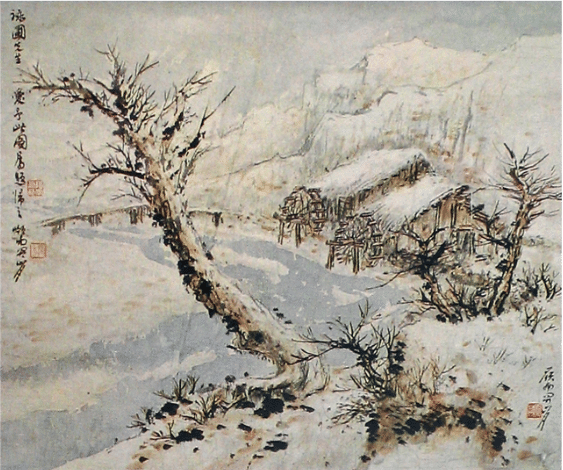
Japanese painter Kano Sansetsu.
Color may go into hiding, but it’s there all alright. No one found it quite like Canada’s Tom Thomson, a chunky and loose landscape painter whose work inspired the “Group of Seven.” (Fodder for a future post)
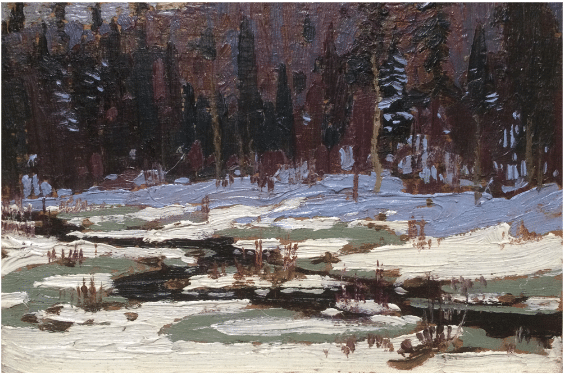
Tom Thomson, winter streams, oil on cigar box lid, c. 1915.
“There are four seasons in the world, but there are only two in my mind- painting and no-painting.” -Tom Thomson, Journal entry, March 18, 1917
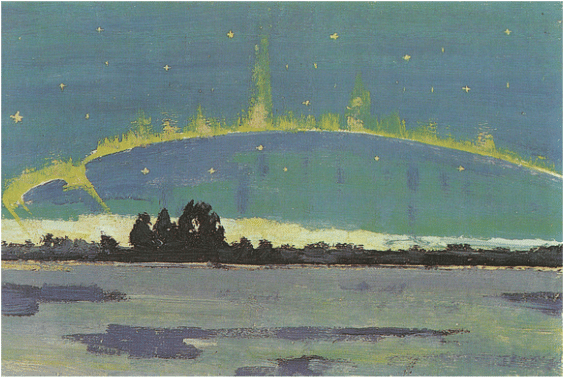
Tom Thomson, Northern Lights, oil, c. 1915
German landscape painter Casper David Friedrich’s Winter Landscape (below) enchants with a soft quiet beauty. Its stark composition conceals more than a hint of hope. A close reading of this painting show Friedrich attempting to capture the eternal conundrum, “man’s yearning for the infinite and his perpetual separation from it,” as art historian William Vaughan has written.
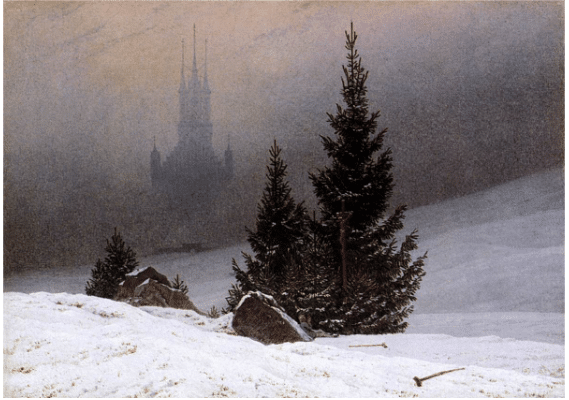
Casper David Friedrich, Winter Landscape, oil, 32.5 × 45 cm, 1811
Though hard to see in the above image, there’s a figure leaning against the rock hands raised in prayer. Nearby, the man’s crutches, no longer needed, lie abandoned in the snow as if dropped as the man neared his goal.
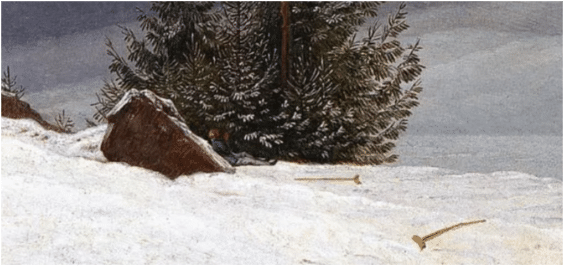
The pine tree in front of him echoes in shape the snowy cathedral in the background – there’s a relationship there, as the gothic pinnacles of both reach into the blushing peach of dawn. New shoots of grass sprouting in the snow tell of a new season just around the corner. “Winter Landscape, then, maybe read as an image of hope,” says art writer Christopher Jones, “a reunion of the Christian self through the spiritual union with nature.”
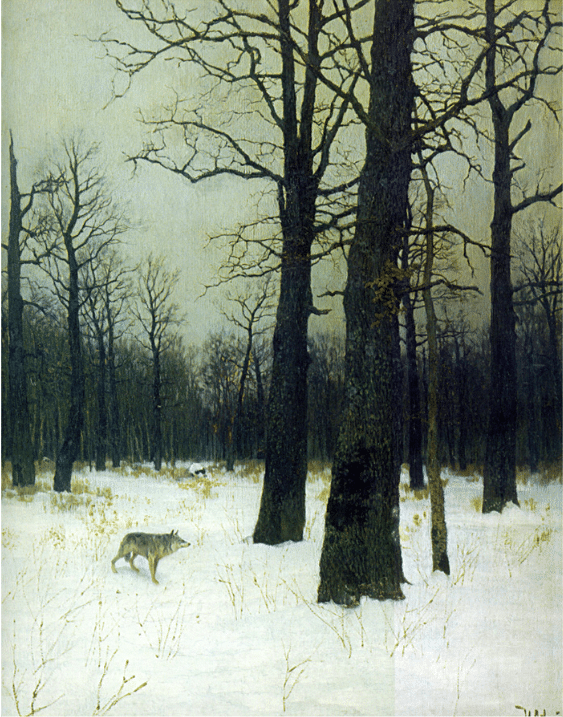
Isaak Levitan, Winter Woods
The above image is by Isaak Levitan. He was a Russian painter, sometimes erroneously called a Russian Impressionist. In his apparently realist work, as in Friedrich’s, nature becomes spiritualized and reflects conditions of the human soul. Another great Russian snow painting has to be Aleksey Savrasov’s The Rooks Have Returned (below).
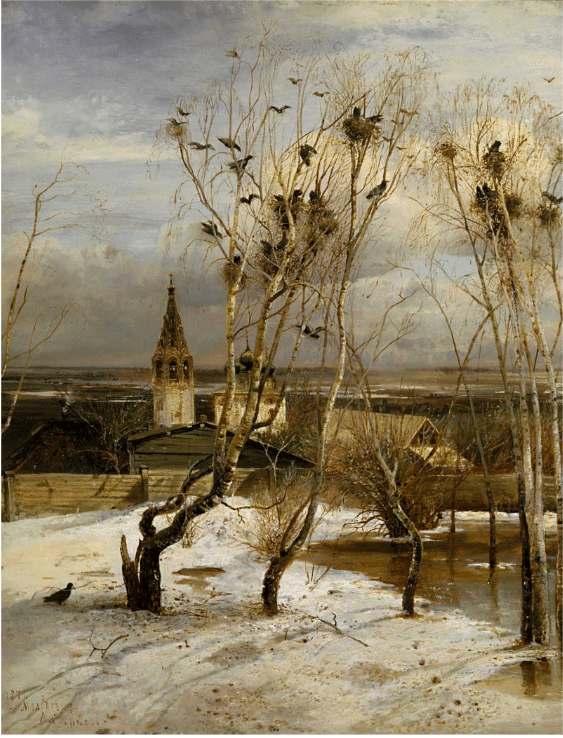
Aleksey Savrasov, The Rooks Have Returned, 1871
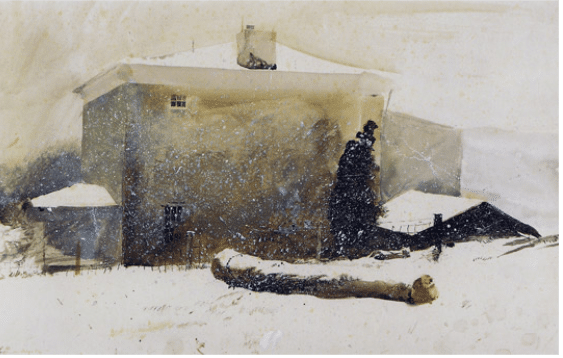
Andrew Wyeth
“He who marvels at the beauty of the world in summer will find equal cause for wonder and admiration in winter… In winter the stars seem to have rekindled their fires, the moon achieves a fuller triumph, and the heavens wear a look of a more exalted simplicity.”
– John Burroughs
“Spring, summer, and fall fill us with hope; winter alone reminds us of the human condition.”
– Mignon McLaughlin
“No winter lasts forever; no spring skips its turn.”
– Hal Borland
“People don’t notice whether it’s winter or summer when they’re happy.”
– Anton Chekhov
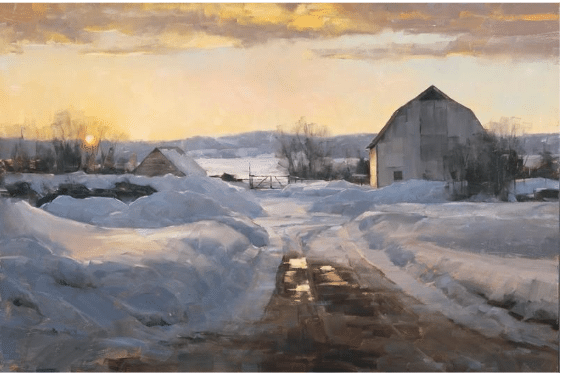
Dave Santillanes, a winter sunset
Contemporary painter Dave Santillanes, who lives in Colorado, paints a lot of snow, in a process involving an almost spiritual intimacy.
“For me,” he says, “the sensory experience of being there is equally important… intense observation brings a spiritual intimacy with the scene that can’t be achieved in mere passing and allows me to ‘speak’ with complete sincerity in each painting.”
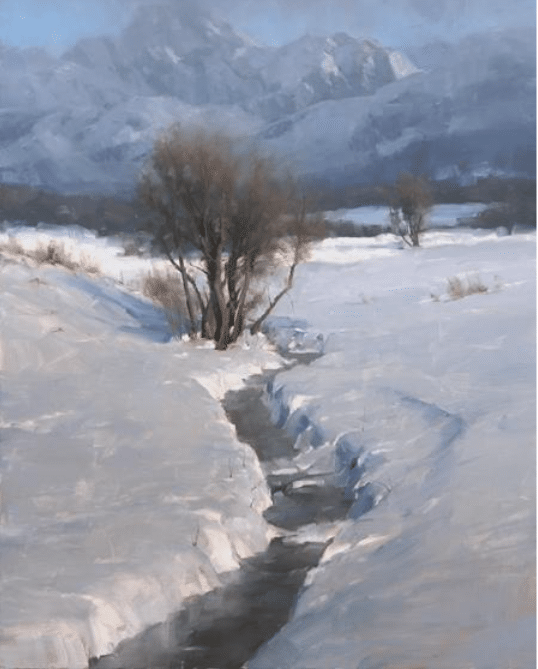
Dave Santillanes, winter in oils
“Snow reveals color much better than other objects,” he says. Follow along as Dave teaches snow painting in Dave Santillanes, Winter Landscapes.

